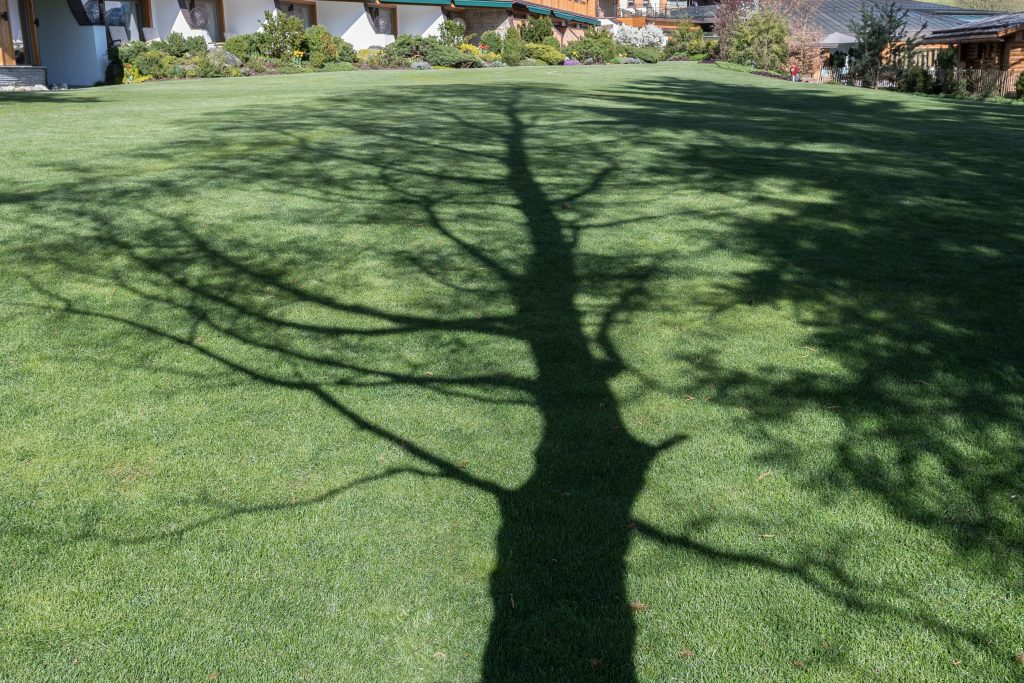-

“He who has understood the shadow that is in him, is close to the light”
Carl Gustav Jung.The concept of enantiodromia (Ancient Greek: enantios – opposite and δρόμος, dromos – running course) stems from the philosophy of Heraclitus and is used to designate the play of opposites in the course of events. It means, that everything that exists turns into its opposite.
As Carl Gustav Jung describes: “Old Heraclitus, who was indeed a very great sage, discovered the most marvelous of all psychological laws: the regulative function of opposites. He called it enantiodromia, a running in reverse, by which he meant that sooner or later everything runs into its opposite.”.
There is a known song “What goes up, must come down”. All things that reach its peak are bound to slide down. The concept of enantiodromia uses Jung in psychology to describe an important role of our shadow, our dark side.Not to be aware of the shadows (each one of us are dealing with) mostly lead to what is now called a psychosomatic illness. Only in the unconscious state there are energy complexes which find their channels on the physical plane. In reality, for instance, when one climbs the mountain peak the oxygen is scarce and it is absolutely necessary to go downhill, to stay alive. Jung’s further thought is that the characteristic phenomena practically always occurs when an extreme, one -sided tendency dominates conscious life.
During the time an equally powerful counter position is built up, first inhibiting conscious performance, and subsequently breaks through the conscious control. By one-sidedness Jung means predominant intellectual stance (or an emotional one for that matter). Not integrating the two creates a person who is living only a part of him/herself. In the analytical work the most fundamental task is to assist the patient to transport “the opposite” (intellect or emotion) hidden in the darkness of the unconscious, and to bring it in the light of consciousness.
Dr. med. André Simon © Copyright
Credits: The tree with its lights and shadows was photographed by Dr. Dietrich Weller, who has agreed to illustrate this story. The author is grateful for this permission.
Postscript by Dietrich Weller
There is the statement:
Where much light is, there is much shadow.
The reverse sentence ist also real:
Where much shadow exists, there must be much light.This understanding is a great help in dark situations!
Übersetzung von Dietrich Weller
Licht und Schatten
Wer den Schatten in sich verstanden hat, befindet sich nahe am Licht.
C. G. JungDas Konzept der Enantiodromie, der Gegenläufigkeit (altgriechisch enantios = gegensätzlich und dromos = Rennbahn) stammt von der Philosophie des Heraklit und wird benutzt, um das Spiel der Gegensätze im Lauf der Geschehen zu bezeichnen. Es bedeutet, dass alles, was existiert, sich ins Gegenteil verwandelt.
Wie Carl Gustav Jung beschreibt: „Der alte Heraklit, der wirklich ein großer Weiser war, entdeckte das wunderbarste psychologische Gesetz, die regulierende Funktion von Gegensätzen. Er nannte es Enantiodromie, den Lauf ins Umgekehrte, durch den seiner Meinung nach früher oder später alles ins Gegenteil verläuft.“
Es gibt einen bekanntes Lied: „Was hoch steigt, muss herunter kommen.“ Alles was einen Gipfel erreicht, ist dazu angelegt, abwärts zu gleiten. Das Konzept der Enantiodromie benutzt Jung in der Psychologie, um eine wichtige Rolle unseres Schattens, unserer dunklen Seite zu beschreiben.
Sich nicht seiner Schattens bewusst zu sein (mit denen jeder von uns umgeht), führt meistens zu etwas, das heutzutage als psychosomatische Krankheit bezeichnet wird. Nur im unbewussten Zustand gibt es energetische Komplexe, die ihre Wege auf die körperliche Ebene schaffen. In Wirklichkeit zum Beispiel wenn jemand auf einen Berggipfel klettert und der Sauerstoff knapp wird, ist es unbedingt nötig abzusteigen, um am Leben zu bleiben.
Jungs weitere Gedanken bestand darin, dass die charakteristischen Phänomene praktisch immer auftauchen, wenn eine extreme einseitige Tendenz das bewusste Leben bestimmt.
Währenddessen wird eine gleich mächtige Gegenposition aufgebaut, die zuerst das bewusste Verhalten hemmt und anschließend die bewusste Kontrolle durchbricht. Einseitigkeit versteht Jung als überwiegende intellektuelle Haltung (oder eine gefühlsmäßige in diesem Beispiel).
Die beiden nicht zu vereinen, erschafft eine Person, die nur einen Teil von sich / von ihr lebt.
In der analytischen Arbeit besteht die grundlegende Aufgabe darin, dem Patienten dabei zu helfen, die Gegenseite (Intellekt oder Gefühl), die im Dunkeln des Unterbewusstsein versteckt sind, zu bewegen und es ans Licht des Bewusstseins zu bringen.
Nachbemerkung von Dietrich Weller
Es gilt die Behauptung:
Wo viel Licht ist, gibt es viel Schatten.
Der Umkehrsatz gilt auch:
Wo viel Schatten ist, muss es viel Licht geben.
Diese Erkenntnis ist eine große Hilfe in dunklen Situationen.Dank an Dietrich Weller für das Foto und die Erlaubnis, diesen Text damit zu bebildern